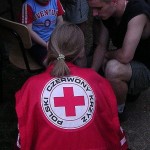The younger, safer, sibling of Second Life, Teen Second Life (TSL) offers educators in secondary education an opportunity to instruct in an immersive environment without putting their students at risk of harm from predators. Access to TSL is for teens and rigorously screened adults only. Movement of adults in the world is very restricted, but teens can move about freely. TSL is owned and operated by Linden Labs, the same company that owns Second Life.
http://teen.secondlife.com/
Face 1: Market Focus
Teen Second Life is designed for teens 13-17 so obviously they are focused on secondary education. Because of the tight restrictions higher education institutions and corporations must go to the main Second Life grid.
Face 2: Types of Offerings
Linden Labs is offering the infrastructure in which educators and students can create content. Instructors and students can create virtual educational spaces where all the data is saved on Linden Lab’s servers, but which they can access from their own computers.
Face 3: Who is the Buyer?
There are two levels of buyer in TSL. First, they are trying to attract institutions like school to buy land and create a presence in TSL. Second, individual instructors who are early adopters of the technology may purchase land themselves. This may occur when schools are not willing to invest and the individual teacher wants to prove the concept to a principal or a superintendant. Teens can create accounts for free, so they are not buyers.
Face 4 – Global Markets
Because all the documentation and marketing for TSL is in English, the primary market would be wired Anglophone countries, with some customers coming from European countries with language skills. It would be possible for instructors from Asia and other well wired areas who had English skills to set up a virtual environment for students who would then communicate in other languages. This would mean that TSL could expand into any market that had good, high speed internet and a population with higher end computers.
Face 5 – Development of the Market
TSL targets markets with well developed internet access and a population which has access to higher end computers with good graphics capabilities. They also need to attract instructors who are willing to go outside of their classrooms and create educational experiences in a virtual world. Within that relatively narrow niche, they compete well in the market because they have all the technology and software developed for Second Life. Other educational immersive environments have less developed infrastructures, or are based on earlier versions of Second Life released as open-source projects. Linden Labs has the economically successful Second Life to drive development and improvement of both Second Life and TSL while the smaller and open source projects have fewer resources.
Face 6 – Learning Technology Competing with Other Forms of Learning
Teaching in immersive environments like TSL is currently an adjunct to teaching face to face in a classroom. The 3D building environment competes with some aspects of traditional teaching, like lab demonstrations and lectures, and provides the opportunity for students from geographically separated locations to interact and work together. In the future immersive environments may displace some aspects of traditional teaching, but with the current level of technology and the constraints of having to have a higher end computer; TSL is still very much on the fringe of teaching and learning.



